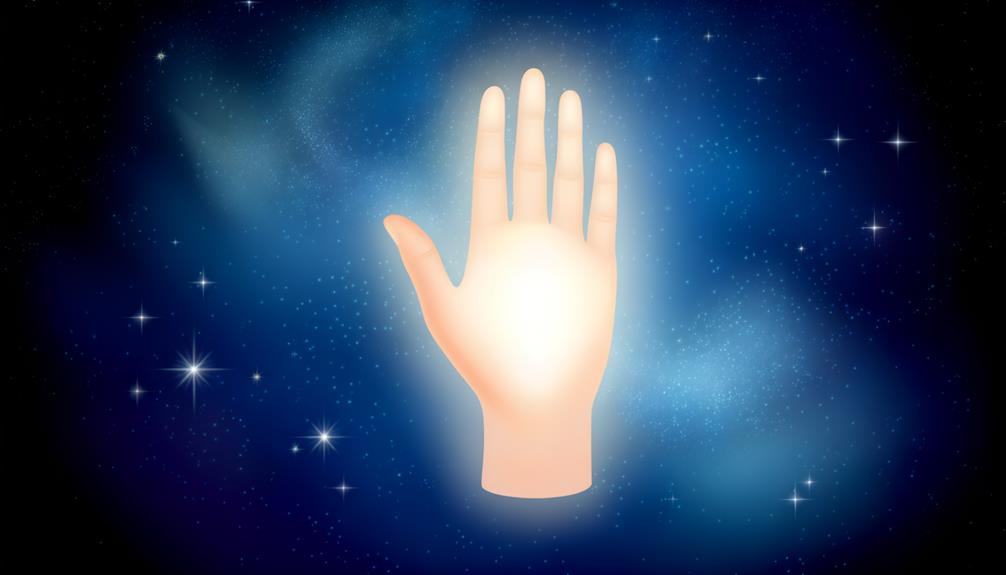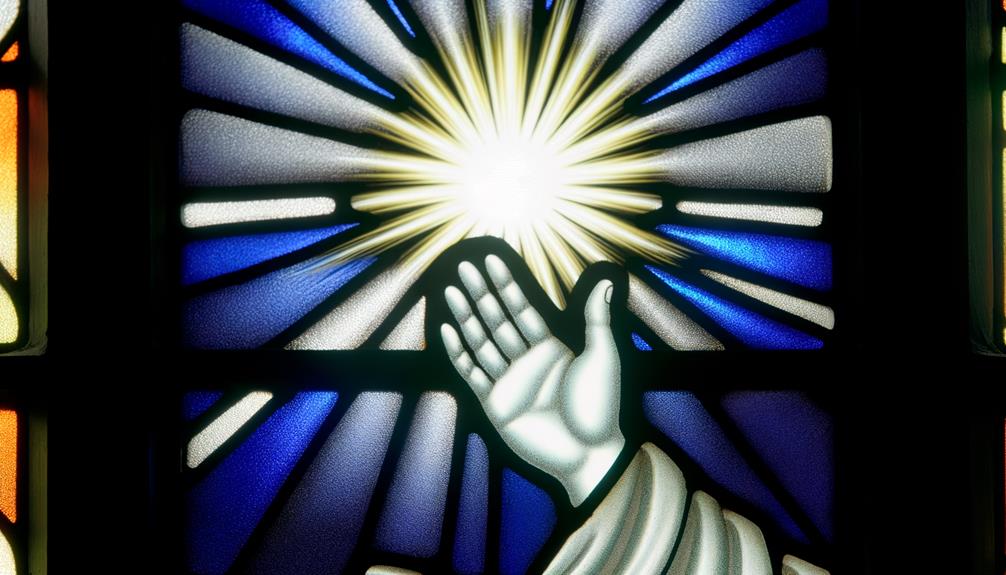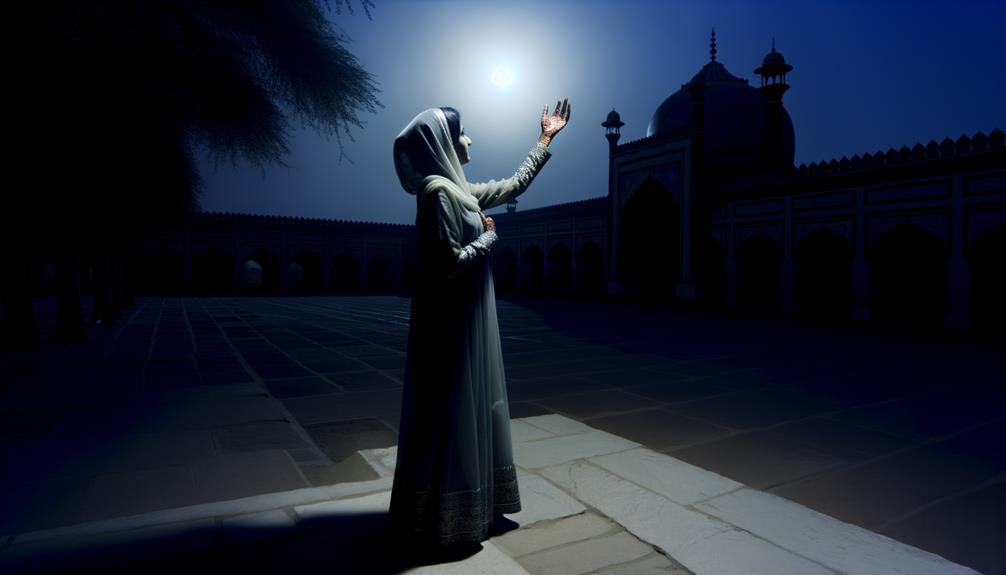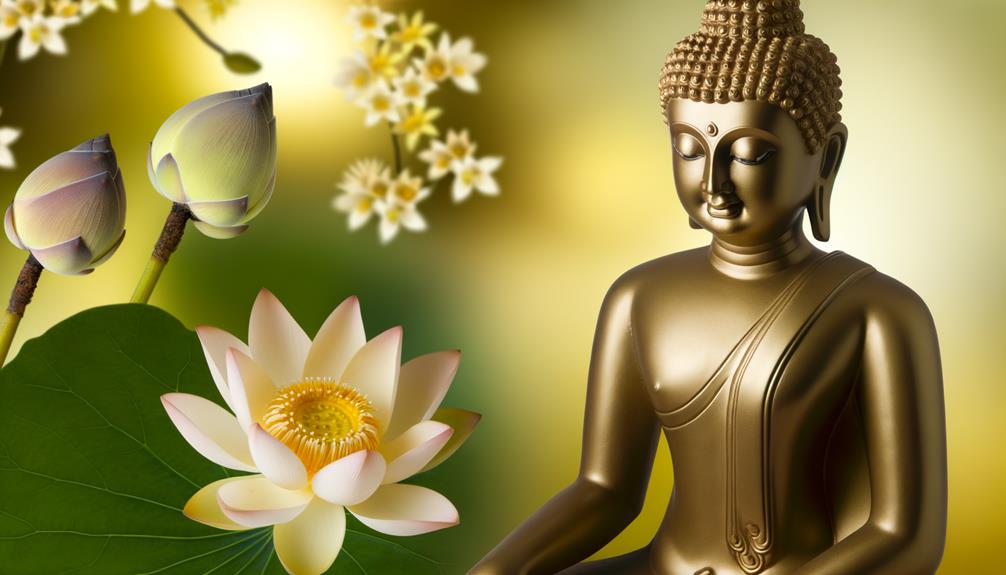Spiritual Meaning of Right Hand: Power and Action
The right hand holds profound spiritual significance across various cultures and religions. In Christianity, it symbolizes divine authority and protection, embodied by Jesus seated at God’s right hand.
Hinduism views it as a symbol of purity and blessings, central to sacred rituals. In Islam, it represents honor, integrity, and cleanliness, essential for daily practices.
Judaism associates it with power and divine favor, visible in blessing customs. Buddhism connects it to generosity and fearlessness through specific hand gestures (mudras).
Native American traditions see it as a source of strength and healing. Begin a deeper journey to explore these layered meanings further.

Spiritual Meaning of Right Hand: Power, Action, and Divine Connection
| Aspect | Spiritual Meaning |
|---|---|
| Power & Authority | Represents leadership and control |
| Action & Manifestation | Symbolizes taking action and achieving goals |
| Divine Blessings | Often used in blessings and sacred rituals |
| Protection | Right hand used as a shield against negativity |
| Masculine Energy | Associated with assertiveness and strength |
| Giving & Receiving | Channel for offering and receiving energy |
The Right Hand in Christianity

In Christianity, the right hand symbolizes favor, authority, and divine power, often representing the hand of God in scripture and art. This symbolism is deeply rooted in biblical passages, where the right hand is frequently associated with God’s blessings and righteous judgment.
For instance, Jesus Christ is described as sitting at the right hand of the Father, signifying a place of honor and intercession. The right hand also conveys protection and strength, as seen in Psalms, where God’s right hand upholds and delivers the faithful.
This imagery serves as a powerful reminder of divine presence and guidance in believers’ lives, inspiring faith and trust in God’s unwavering support and grace. Through the right hand, Christians find a profound connection to divine favor.
Hindu Beliefs and Practices
In Hinduism, the right hand holds profound spiritual significance, symbolizing purity and auspiciousness in various sacred rituals and symbolic gestures.
Right hand blessings are a traditional practice, believed to bestow divine grace and protection upon devotees.
Additionally, hand gestures in worship, such as mudras, serve as powerful expressions of spiritual intent and connection with the divine.
Sacred Rituals and Symbolism
Deeply embedded within Hindu beliefs and practices, the right hand holds profound spiritual significance, symbolizing purity, righteousness, and divine authority.
In sacred rituals, the right hand is primarily used to offer prayers, perform aarti, and make offerings, underscoring its sanctity. The right hand is also employed in the act of giving, reflecting a gesture of benevolence and grace.
This symbolism is deeply rooted in Hindu scriptures, where deities are often depicted bestowing blessings with their right hand. The right hand’s association with auspiciousness and moral rectitude resonates throughout Hindu culture, serving as a reminder of the values of dharma and the quest for spiritual enlightenment.
Its sacredness in rituals underscores the profound spiritual ethos guiding Hindu life.
Right Hand Blessings
Revered as a conduit of divine energy, the right hand in Hindu traditions is often extended in blessings to convey spiritual protection, prosperity, and guidance.
This gesture, deeply rooted in ancient practices, embodies the transfer of grace from the divine to the mortal domain. The right hand’s sanctity is observed in various rituals and daily life, symbolizing an offering of goodwill and divine favor.
In Hindu blessings, the right hand is used to:
- Bestow Spiritual Protection: Shielding individuals from negative influences and misfortune.
- Grant Prosperity: Encouraging wealth, success, and overall well-being.
- Provide Guidance: Illuminating the path with wisdom and clarity.
Each gesture serves as a reminder of the ever-present divine support and the interconnectedness of all beings.
Hand Gestures in Worship
A myriad of hand gestures, or mudras, in Hindu worship serve as powerful symbols of spiritual intent and connection with the divine. Each mudra, performed with the right hand, carries profound meaning, invoking specific energies and aligning the practitioner with higher states of consciousness.
For instance, the Anjali Mudra, where palms are pressed together, symbolizes reverence and humility, fostering a heart-centered focus. The Jnana Mudra, with the thumb and index finger touching, invokes wisdom and knowledge, enhancing meditation practices.
These gestures are not mere ritualistic movements; they are sacred conduits through which devotees communicate their devotion and seek inner transformation. By understanding and practicing these gestures, one can deepen their spiritual journey, fostering a more profound connection with the divine.
Symbolism in Islam

In Islamic tradition, the right hand holds profound significance, embodying acts of purity, a symbol of honor, and the hand of blessings.
This sacred symbolism is deeply embedded in daily practices, where the right hand is used for eating, greeting, and giving, reflecting a commitment to cleanliness and respect.
Embracing the right hand’s spiritual essence enriches one’s connection to divine principles and communal harmony.
Acts of Purity
Often regarded as a manifestation of spiritual cleanliness, the use of the right hand in Islam symbolizes the pursuit of purity and righteousness in daily actions. This practice is deeply rooted in the teachings of the Prophet Muhammad, who emphasized the importance of using the right hand for noble and clean activities.
The concept encompasses several aspects of daily life:
- Eating and Drinking: Using the right hand for consumption reflects a conscious choice towards maintaining purity.
- Greeting and Handshakes: Extending the right hand during greetings fosters a sense of respect and honor.
- Acts of Charity: Offering help and giving charity with the right hand signifies sincerity and purity of intention.
These actions collectively represent a commitment to spiritual and physical cleanliness.
Symbol of Honor
The right hand in Islamic tradition stands as a profound symbol of honor and integrity, reflecting the values of respect, dignity, and moral uprightness.
It is the hand used for noble actions such as giving charity, greeting others, and partaking in ceremonies. This symbolism extends to daily practices, emphasizing cleanliness and righteousness.
In the Qur’an and Hadith, the right hand is often associated with those who will receive their deeds favorably on the Day of Judgment—a reflection of their virtuous lives.
Such emphasis not only elevates the physical act but also imbues daily actions with spiritual significance, reminding adherents to lead lives of exemplary conduct, embodying the highest ethical standards in all interactions.
Hand of Blessings
Islamic teachings often regard the right hand as a conduit for divine blessings, symbolizing the flow of grace and favor from the divine to the faithful.
This symbolism is deeply rooted in various aspects of Islamic practice and tradition:
- Acts of Worship: The right hand is favored in ritual acts, such as making ablutions before prayer, signifying purity and devotion.
- Charitable Giving: When giving alms (Zakat), using the right hand underscores the sincerity and righteousness of the act.
- Daily Etiquette: Simple everyday actions, like eating and greeting, performed with the right hand, reflect adherence to the Prophet’s (PBUH) guidance and an ongoing connection with divine blessings.
This emphasis on the right hand serves as a constant reminder of the spiritual alignment and the pursuit of divine favor in every aspect of life.
Jewish Spiritual Significance
In Jewish tradition, the right hand holds profound spiritual significance, symbolizing power, protection, and divine favor.
The right hand is frequently mentioned in the Torah and other sacred texts, often representing God’s strength and intervention. For example, the Psalms speak of the ‘right hand of the Lord’ performing mighty deeds and delivering justice.
This symbolism extends to everyday practices, such as the custom of placing the right hand on a child’s head during blessings. The right hand signifies a conduit for divine energy, channeling blessings and protection.
This belief reflects a deep-seated reverence for the right side as a representation of divine authority, fostering a sense of spiritual security and guidance.
Buddhist Interpretations

In Buddhist tradition, the right hand holds profound spiritual significance, often symbolizing acts of giving and gestures of protection.
This hand is frequently depicted in statues and paintings of the Buddha, emphasizing the values of generosity and safeguarding others from harm.
Such representations inspire practitioners to embody these virtues in their daily lives, fostering a compassionate and peaceful existence.
Symbol of Giving
Within the rich tapestry of Buddhist teachings, the right hand is often revered as a profound symbol of generosity and benevolence.
This symbolism is deeply embedded in various practices and representations, reflecting the essence of compassionate giving. For those on a spiritual journey, the right hand signifies the selfless act of offering without expecting anything in return.
Key elements include:
- Dana Paramita: The perfection of giving, where the right hand represents the virtue of charity.
- Buddha’s Mudras: Specific hand gestures, such as Varada Mudra, symbolize the act of bestowing blessings.
- Daily Rituals: The right hand is used in offerings to deities, embodying the principle of generosity.
These practices inspire adherents to cultivate a spirit of altruism and kindness.
Gesture of Protection
Amidst the profound teachings of Buddhism, the right hand is frequently depicted as a gesture of protection, symbolizing the safeguarding of believers on their spiritual path. This gesture, known as the Abhaya Mudra, represents fearlessness and divine shelter.
When the Buddha raised his right hand, palm outward, he offered reassurance and a promise of spiritual security to his followers. This ancient symbol serves as a reminder that the path to enlightenment is safeguarded by divine presence, urging practitioners to trust in their journey.
Reflectively, the Abhaya Mudra inspires believers to cultivate inner peace, courage, and unwavering faith, reinforcing the understanding that they are protected against obstacles and fear on their path to spiritual awakening.
Ancient Egyptian Traditions
Ancient Egyptian traditions hold the right hand in high esteem, symbolizing actions of power, honor, and sacred rituals. The right hand was believed to be the conduit of divine will and was prominently featured in various cultural expressions.
Reflecting on this ancient wisdom, we find that:
- Pharaohs and Deities: The right hand of Pharaohs and gods was often depicted holding scepters or ankh symbols, representing authority and life.
- Funerary Practices: In burial rituals, the deceased’s right hand was positioned to signify their journey towards the afterlife, underscoring its spiritual importance.
- Temple Ceremonies: Priests used their right hands to perform sacred rites, invoking divine protection and blessings.
These practices reveal the profound reverence the ancient Egyptians had for the right hand, embodying spiritual and temporal power.
Native American Perspectives

Drawing parallels to the significance of the right hand in ancient Egyptian traditions, Native American cultures also imbue the right hand with profound spiritual symbolism.
The right hand often represents strength, action, and the embodiment of one’s willpower. Among various tribes, it is considered a conduit for positive energy and healing.
Elders emphasize its use in blessing others, sharing wisdom, and forging communal bonds. The act of giving or receiving with the right hand is seen as an exchange of goodwill and respect.
Reflecting on this, one finds that the right hand in Native American perspectives serves as a bridge between the physical and spiritual domains, reminding us of our interconnectedness and shared humanity.
Rituals and Ceremonies
How do rituals and ceremonies across various cultures highlight the profound spiritual significance of the right hand? The right hand has long been a symbol of power, blessing, and sacred action.
This is evident in numerous cultural practices:
- Blessings and Oaths: In many religions, the right hand is used to bestow blessings or take oaths, signifying truth and integrity.
- Ritual Gestures: In Hinduism, the right hand performs mudras during worship, symbolizing divine energy and consciousness.
- Ceremonial Offerings: In various traditions, offerings are often made with the right hand, indicating respect and purity.
These rituals underscore the right hand’s role as an instrument of spiritual connection, reflecting humanity’s deep-seated reverence for this symbolic limb.
The Right Hand in Art

The profound spiritual significance of the right hand reverberates through art, where it is often depicted as a symbol of power, authority, and divine intervention.
From Renaissance masterpieces to contemporary works, artists have used the right hand to convey profound meanings and messages.
The reverence for this symbol is evident in the tender strokes of a painter’s brush or the meticulous chisel of a sculptor.
| Depiction | Emotional Response |
|---|---|
| Michelangelo’s “Creation of Adam” | Awe and wonder |
| Classical sculptures | Reverence and respect |
| Modern installations | Reflection and introspection |
In the tapestry of human expression, the right hand remains an enduring emblem of the sacred, guiding viewers to a deeper understanding of their spiritual journey.
Modern Spiritual Views
In contemporary spiritual practices, the right hand continues to symbolize strength, healing, and the manifestation of one’s inner power.
Modern spiritual views draw upon ancient traditions while integrating new, holistic approaches to personal development.
The right hand is often associated with:
- Reiki Healing: Practitioners use their right hand to channel energy, promoting physical and emotional well-being.
- Affirmations: Writing or gesturing with the right hand enhances the power of positive statements, embedding them deeply in the subconscious.
- Meditative Gestures: Specific hand positions, or mudras, using the right hand, are believed to release spiritual energy and balance chakras.
These practices highlight the enduring significance of the right hand as a conduit for spiritual growth and empowerment.
Conclusion
The symbolism of the right hand holds profound spiritual significance across various religions and cultures. Remarkably, a study found that 90% of the world’s population is right-handed, underscoring its universal prominence.
This phenomenon is reflected in Christianity’s depiction of divine authority, Hindu rituals of purity, Islamic practices of cleanliness, Jewish traditions of blessing, Buddhist teachings of compassion, and Native American customs of respect.
The right hand continues to inspire and connect humanity through both ancient traditions and modern spiritual practices.






